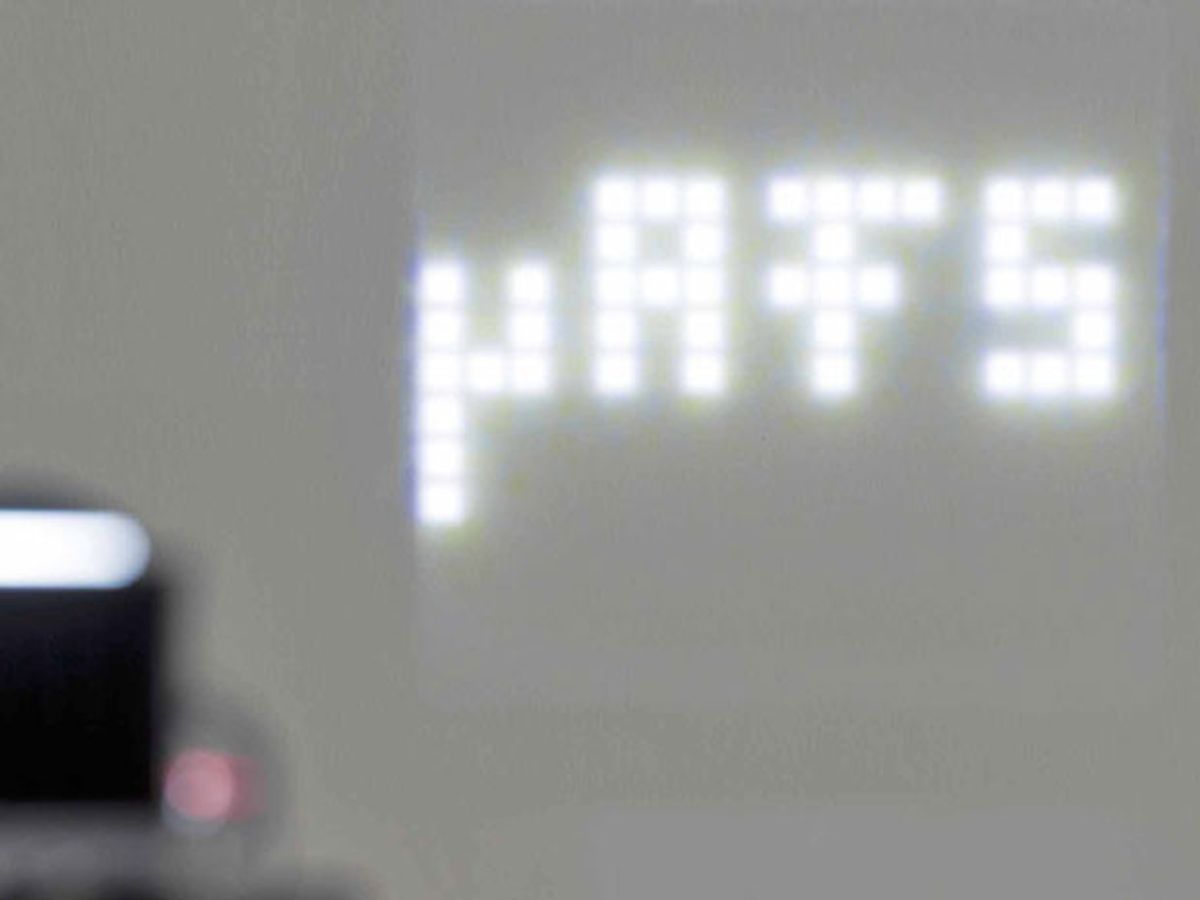Conventional headlights are extraordinarily wasteful. In order to light up your side of the road, they end up illuminating a bunch of other side of the road (including the eyeballs of other drivers), as well as a significant chunk of the sky—and trees and houses and garden gnomes and lawn flamingos—for no good reason. Won't somebody please think of all of those poor photons, zipping uselessly off into random directions?
Fortunately, the Fraunhofer Institute is very concerned about the fate of photons. They've designed a new type of headlight that illuminates the road ahead better than ever before, using a thousand LEDs—70 percent of which are usually kept in photon-saving mode. That is, turned off.
The ideal headlight would brightly illuminate what you care about, and leave everything else in darkness. We've seen headlights that use lasers or DLP systems to dynamically target and adjust light output, but even those are less efficient than they could be, because they operate by selective occlusion. In other words, the headlights are producing light that they then immediately block, effectively wasting it and leaving the jilted photons feeling useless and depressed. Another option has been to use an array of larger LEDs (typically about 80 of them), with each one hooked up to some expensive and finicky optics.
Fraunhofer's solution is to use a 1024-LED array, with each “pixel” sized at 125 micrometers. The LEDs (which emit 3 lumens each) can be individually controlled, which allows the headlight to selectively distribute the light that it projects at an unprecedented resolution. For example, one headlight is capable of illuminating the road ahead, curves, parked cars, upcoming street signs, and whatever else you want, all at high beam brightness while intelligently avoiding searing the eyeballs of oncoming drivers. Fraunhofer says that on average, only 30 percent of the pixel array needs to be active at once, resulting in a significant efficiency improvement over other LED headlights.

This new headlight is the result of a collaborative project called µAFS (for micro Adaptive Front-Lighting Systems), which also involves Infineon, Osram, Hella and Daimler. One particularly tricky part of making this thing work was finding a way to reliably make the 15-µm connections needed to control each one of those LED pixels. The solution to this (and, indeed, to most other problems) was a sponge. This particular sponge is a nanoporous structure made of gold that can be compressed so that it adapts itself to the topography of whatever component you're squishing it against—quickly and easily compensating for any unevenness which might otherwise cause problems.
Beyond mentioning that “the LED chips are currently installed in headlights,” Fraunhofer hasn't said much about when we might expect to see some sort of commercial product. What we can expect is that whenever such a commercial product does become available, it's going to show up first in a Mercedes, meaning that those of us who work for nonprofits will be able to take advantage of them closer to later than sooner.
Evan Ackerman is a senior editor at IEEE Spectrum. Since 2007, he has written over 6,000 articles on robotics and technology. He has a degree in Martian geology and is excellent at playing bagpipes.



